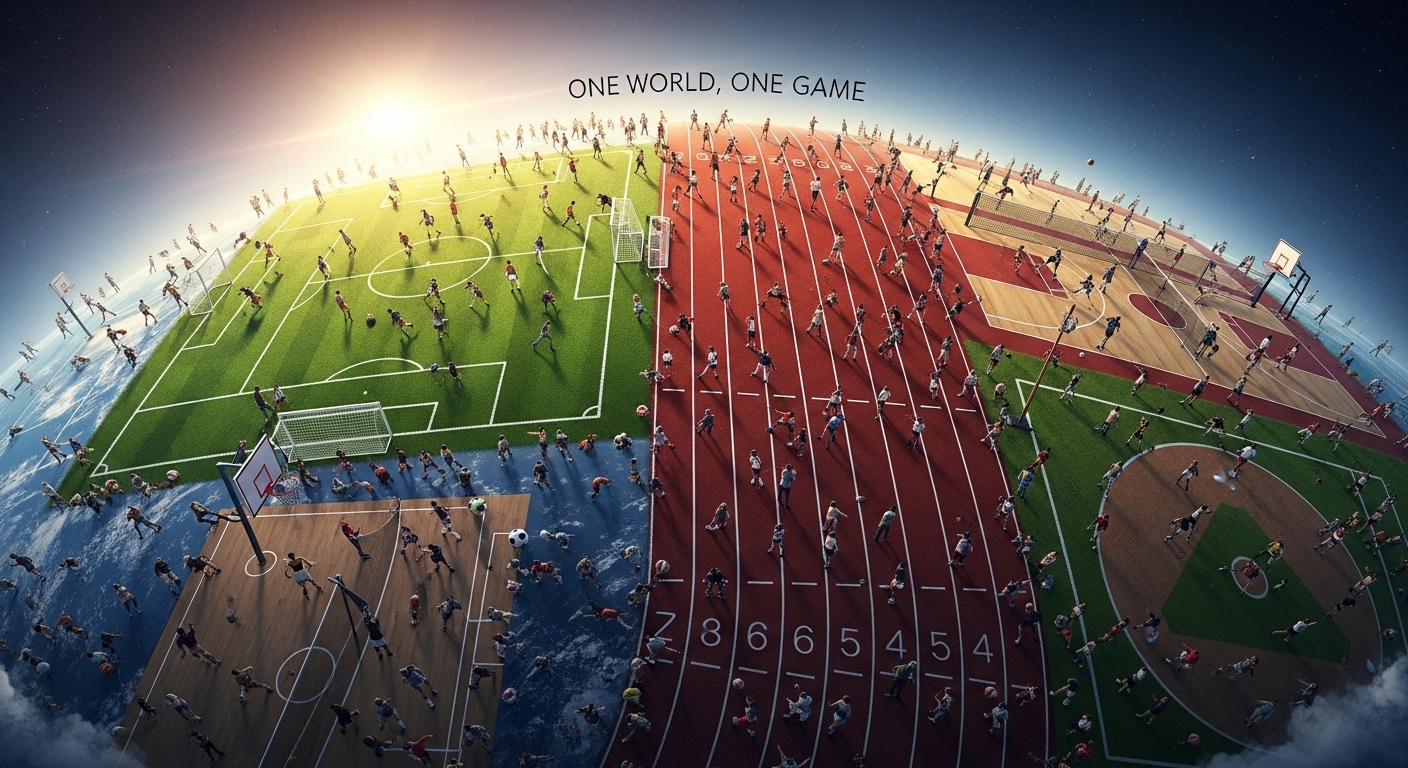Sports broadcasting has undergone a dramatic transformation over the past few decades, driven primarily by rapid advancements in technology. From the early days of radio commentary to today’s immersive, multi-platform experiences, technology has fundamentally reshaped how fans watch, analyze, and engage with sports. The integration of digital tools, real-time analytics, augmented reality, and global streaming platforms has created a richer, more interactive viewing experience than ever before. This blog explores the evolution of sports broadcasting, highlighting the technological innovations that have revolutionized the industry and the way audiences consume sports content.
The Early Days of Sports Broadcasting
Sports broadcasting began in earnest in the early twentieth century, with radio emerging as the first major medium to bring live sports to the masses. Radio announcers became household names, translating the excitement of games into words for listeners who could not attend in person.
Television gradually took over as the dominant medium in the mid-twentieth century, adding a visual dimension that changed the way fans experienced sports. Early television broadcasts were limited by technology, with black-and-white screens, static camera angles, and minimal graphics. Despite these constraints, television enabled viewers to see athletes in action, dramatically enhancing the connection between fans and sports.
The Role of Camera Technology in Modern Broadcasting
One of the most significant advancements in sports broadcasting has been camera technology. Today’s broadcasts employ multiple cameras, including high-definition (HD) and ultra-high-definition (UHD or 4K) cameras, to capture every angle of a game. Slow-motion replays, close-ups, and multiple perspectives allow viewers to see details that were previously impossible to capture.
Innovations such as aerial drones and cable-suspended cameras provide unique vantage points, while tracking cameras follow players automatically, offering dynamic coverage that enhances the storytelling of sports. These technologies not only improve the viewing experience but also help analysts and commentators break down plays in greater detail, providing fans with a deeper understanding of the game.
High-Definition and Ultra-High-Definition Broadcasting
The shift from standard definition to high-definition broadcasting marked a significant turning point in sports media. HD broadcasts offer sharper images, vibrant colors, and a more immersive experience. Fans can now see intricate details such as facial expressions, sweat, and the movement of equipment, creating a sense of being in the stadium.
The introduction of ultra-high-definition (4K and even 8K) has taken this immersion to another level, particularly in sports with fast-paced action like football, basketball, and hockey. The clarity provided by these broadcasts allows viewers to notice subtle movements, strategy changes, and player positioning, deepening their engagement and appreciation for the sport.
Instant Replay and Slow Motion
Instant replay has become an essential part of sports broadcasting, allowing both referees and fans to review critical moments. Slow-motion technology complements this by providing a frame-by-frame analysis of plays, fouls, and other significant events. These tools not only enhance the entertainment value but also promote fairness and accuracy in officiating.
Sports like football, tennis, and cricket rely heavily on replay technology to adjudicate complex decisions. For viewers, slow motion adds drama and excitement, letting fans relive crucial moments from multiple angles. In many cases, broadcasters now use advanced graphics to highlight trajectories, impact points, or player movement in real-time, offering unprecedented insight into the game.
Graphics and Augmented Reality
Modern sports broadcasts are increasingly reliant on advanced graphics and augmented reality (AR) to convey information to viewers. Digital overlays provide real-time statistics, player information, and tactical insights directly on the screen. Augmented reality allows broadcasters to illustrate strategies, show predicted ball trajectories, or highlight key plays in a visually engaging way.
These technologies help casual viewers understand complex sports and give experts new tools to analyze performance. For example, in football, AR graphics can simulate a quarterback’s throwing options, while in basketball, they can display shooting percentages or defensive coverage zones. These visual aids make broadcasts more informative and interactive, enhancing the overall fan experience.
Multi-Platform Broadcasting and Streaming
The rise of the internet and mobile technology has revolutionized how sports content is consumed. Live streaming platforms now allow fans to watch games on smartphones, tablets, and computers, no matter where they are. Social media integration enables instant sharing of highlights, commentary, and analysis, creating a global sports community that transcends geographical boundaries.
Multi-platform broadcasting also allows for personalized viewing experiences. Fans can choose camera angles, select audio commentary, access stats overlays, or even switch between live games on the same device. This level of control was unimaginable in the early days of radio and television, demonstrating the transformative impact of digital technology.
Virtual Reality and Immersive Experiences
Virtual reality (VR) and 360-degree broadcasting have introduced a new dimension to sports viewing. VR allows fans to experience games as if they were inside the stadium, offering immersive perspectives that replicate being on the field or court. Some broadcasts now include interactive elements where viewers can change angles, zoom in, or even participate in virtual fan experiences.
These innovations are particularly appealing to younger audiences who are accustomed to interactive digital experiences. VR is still emerging, but it represents the future of sports broadcasting, providing fans with an unprecedented level of immersion and engagement.
Advanced Analytics and Data Visualization
Technology has not only improved the visual aspects of sports broadcasting but also the analytical depth. Advanced analytics allow broadcasters to present complex data in understandable formats, such as heat maps, player tracking, and performance metrics. These insights enrich the viewing experience by providing context, strategy breakdowns, and predictive modeling of game outcomes.
Data-driven graphics are now common in sports like football, soccer, and baseball. For example, broadcasters can display a soccer player’s running distance, average speed, and passing accuracy in real-time. This level of analysis deepens fan engagement, bridging the gap between casual viewers and professional analysts.
Interactive Fan Engagement
Technology has transformed fans from passive viewers into active participants. Live polls, social media integration, fantasy sports, and second-screen experiences allow fans to interact with broadcasts in real-time. Broadcasters often incorporate fan reactions, tweets, and social commentary into live coverage, creating a two-way communication channel.
Interactive engagement extends beyond commentary. Fans can participate in prediction games, access exclusive behind-the-scenes content, and engage with broadcasters through apps and social media. This shift has fundamentally changed the relationship between fans and sports, making broadcasts more immersive, social, and participatory.
Mobile Apps and On-Demand Content
Mobile technology has made sports more accessible than ever. Dedicated apps allow fans to watch live events, receive updates, and access on-demand highlights at any time. The availability of on-demand content means fans can catch up on missed games, review key moments, and analyze performance at their convenience.
These apps also provide additional features like real-time statistics, player comparisons, and notifications about game schedules or breaking news. By integrating multiple functionalities, mobile apps have become central to the sports broadcasting ecosystem, complementing traditional television coverage.
The Impact of 5G and High-Speed Internet
The rollout of 5G networks and high-speed internet has further enhanced the quality and reliability of sports broadcasting. Faster data transfer allows for high-definition live streaming with minimal latency, enabling fans worldwide to enjoy seamless broadcasts.
5G also supports emerging technologies such as VR, AR, and real-time analytics, making interactive and immersive experiences more feasible. This infrastructure enables broadcasters to deliver richer, more engaging content to a global audience without the technical limitations of earlier networks.
Ethical and Accessibility Considerations
As technology advances, broadcasters face new ethical and accessibility challenges. The increasing reliance on data and analytics raises questions about privacy, especially when tracking athlete performance and fan behavior. Broadcasters must balance innovation with responsible data use and transparency.
Accessibility is also critical. Features such as closed captioning, descriptive audio, and multi-language commentary ensure that broadcasts are inclusive, allowing diverse audiences to enjoy sports content. Technological advancements must continue to prioritize inclusivity, ensuring that innovations enhance the viewing experience for everyone.
The Economic Impact of Technological Advancements
Technology has also transformed the economics of sports broadcasting. Streaming platforms, digital subscriptions, and advertising opportunities have created new revenue streams for leagues, teams, and broadcasters. Advanced technology allows for targeted advertising, personalized content, and premium experiences that generate additional income.
These economic benefits support investment in better production, analytics, and fan engagement tools, creating a cycle of innovation that continues to elevate the quality of sports broadcasts. The financial impact underscores the integral role technology plays not only in fan experience but also in sustaining and growing the sports industry.
Case Studies of Technological Innovation in Sports Broadcasting
Several landmark innovations demonstrate the impact of technology on sports broadcasting. The Hawk-Eye system in tennis and cricket revolutionized officiating by providing precise ball tracking. The use of player tracking systems in football and basketball offers real-time performance metrics. VR broadcasts in Formula 1 and immersive AR overlays in American football have changed the way fans engage with events.
These examples highlight the diverse applications of technology across sports and emphasize how innovation continues to push the boundaries of what is possible in broadcasting.
The Future of Sports Broadcasting
The future of sports broadcasting will likely involve even greater personalization, interactivity, and immersion. Artificial intelligence (AI) may automate camera angles, commentary, and highlight generation, creating customized experiences for each viewer. Virtual and augmented reality technologies will continue to evolve, offering stadium-like immersion at home.
Blockchain and NFTs could play roles in fan engagement and monetization, while 5G and future network advancements ensure seamless global access. The integration of AI, big data, and immersive technology will redefine the boundaries between physical and digital experiences, transforming sports broadcasting into an interactive, participatory, and highly personalized medium.
Conclusion
Technology has fundamentally transformed sports broadcasting, from the early days of radio commentary to today’s immersive, multi-platform experiences. Innovations in camera technology, HD and UHD broadcasting, instant replay, AR, VR, analytics, and mobile streaming have reshaped how fans consume and engage with sports.
Today, viewers expect interactive, personalized, and immersive experiences that go beyond simply watching a game. Technology has empowered broadcasters to provide richer narratives, deeper insights, and unparalleled engagement, making sports more accessible, exciting, and enjoyable for audiences worldwide.
As technology continues to evolve, the future of sports broadcasting promises even greater innovation. Artificial intelligence, virtual reality, 5G connectivity, and advanced analytics will redefine how fans experience sports, creating opportunities for deeper engagement and more immersive storytelling. The evolution of sports broadcasting demonstrates that technology is not just a tool for viewing—it is a catalyst for transforming the very way we connect with and celebrate sports.
In essence, technology has not only changed how we watch sports; it has changed how we experience them. The stadium may remain the ultimate venue for athletic competition, but through the lens of innovation, fans around the world can now feel closer to the action than ever before.



